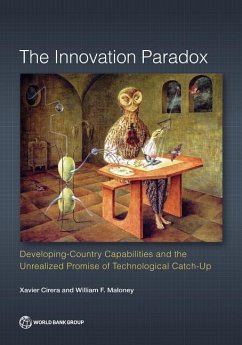
Innovation Commons
The Origin of Economic Growth
Versandkostenfrei!
Versandfertig in 1-2 Wochen
45,99 €
inkl. MwSt.

PAYBACK Punkte
23 °P sammeln!
This book presents a new theory of what happens at the very early stages of innovation. It describes how a new technology is transformed into an entrepreneurial opportunity and becomes the origin of economic growth. The surprising answer is cooperation. The origin of innovation begins in the commons.












